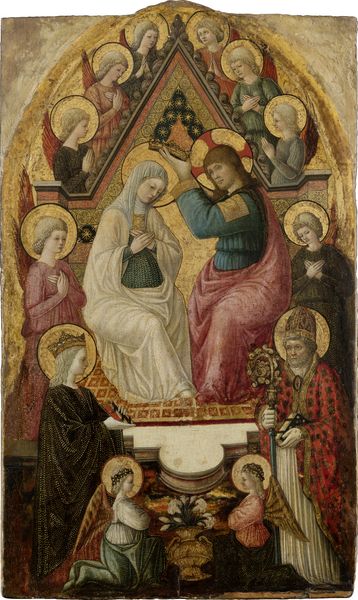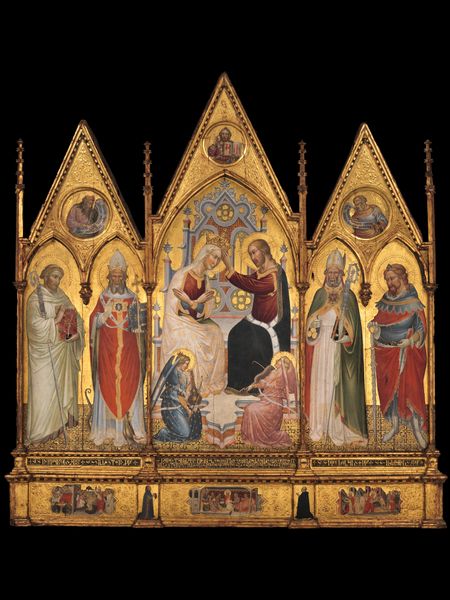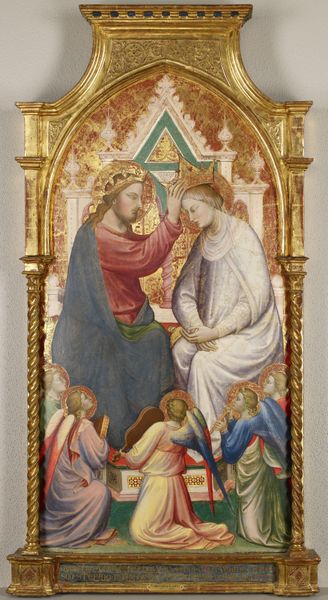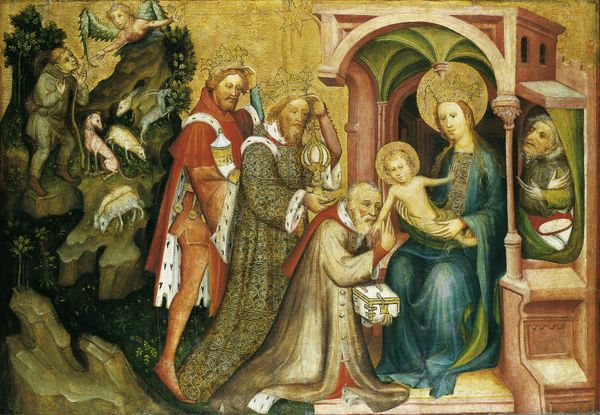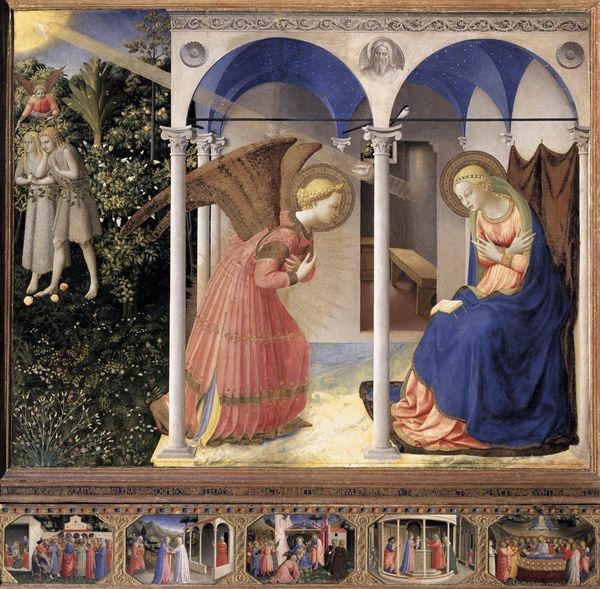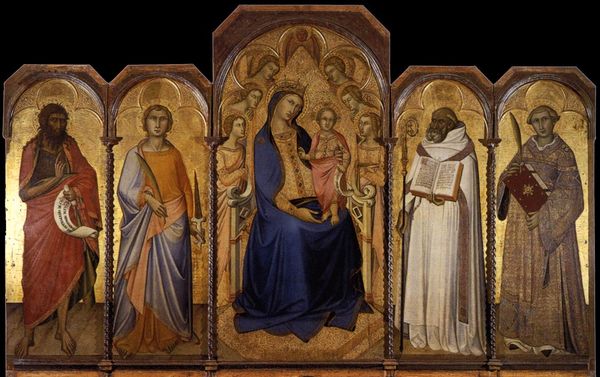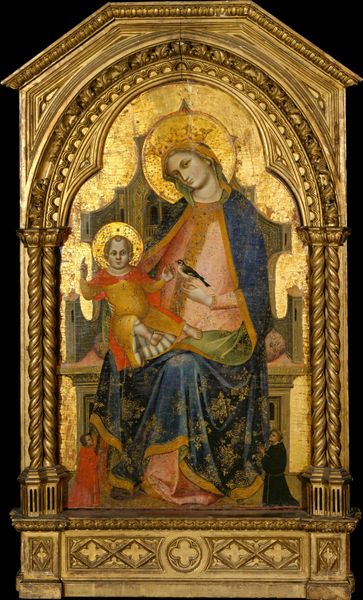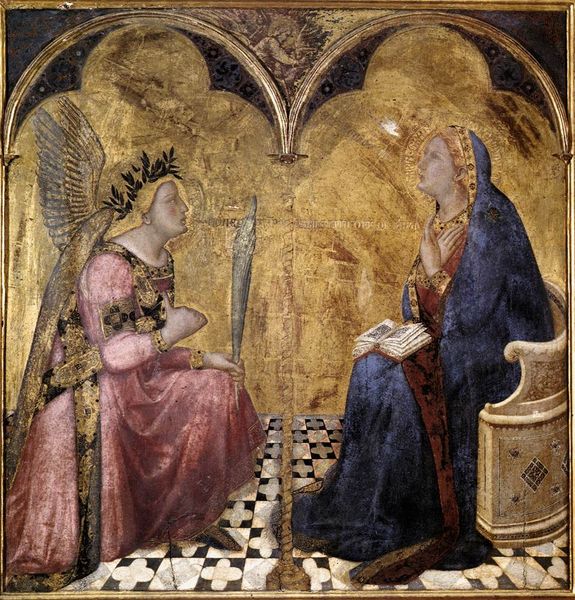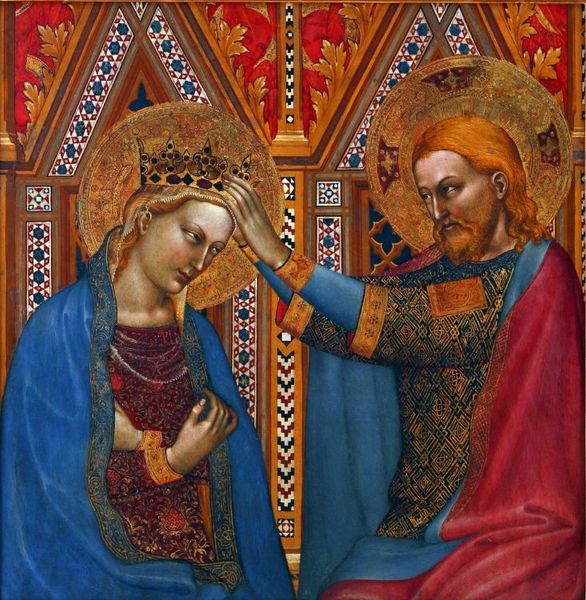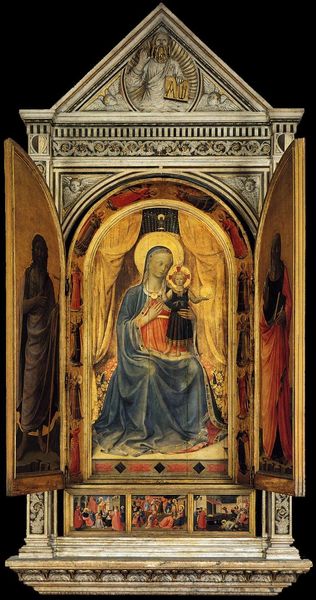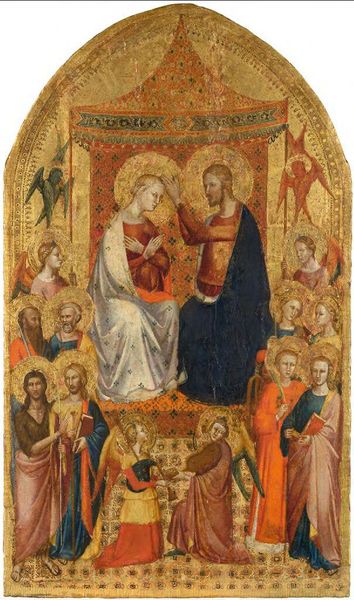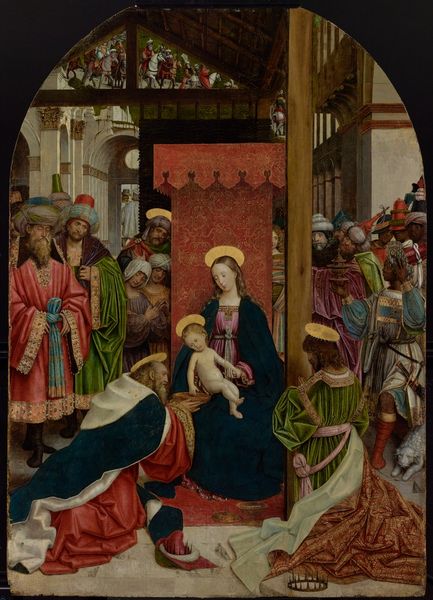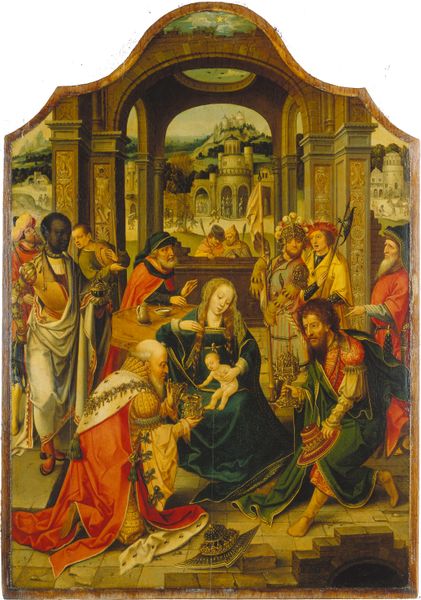
Coronation of the Virgin 1452 - 1458
0:00
0:00
tempera, painting, oil-paint
#
portrait
#
medieval
#
narrative-art
#
tempera
#
painting
#
oil-paint
#
sculpture
#
figuration
#
oil painting
#
italian-renaissance
#
virgin-mary
#
decorative art
#
angel
#
christ
Dimensions: Overall (shaped top): 70 5/8 × 51 3/4 in. (179.4 × 131.4 cm)
Copyright: Public Domain
Curator: Oh, I'm drawn to this piece. It feels, somehow, both grand and intimately devotional. There’s something so sweetly vulnerable about Mary’s expression, don't you think? Editor: Indeed. What we’re looking at here is Giovanni di Paolo's "Coronation of the Virgin," created sometime between 1452 and 1458. It’s currently housed at the Metropolitan Museum of Art, and it presents us with a complex layering of theological, social, and artistic contexts. Curator: Layering is the word! Just look at all those figures crammed up there—it almost feels claustrophobic but also rather… cozy? It’s painted in tempera and oil on wood, giving it this luminous quality. How interesting the figures seem pressed into the frame with little regard for perspective! It adds to the overall sense of spiritual intensity. Editor: Absolutely. The composition serves specific ideological functions. Mary’s coronation as Queen of Heaven reinforces her elevated status, historically used by the church to solidify its power and to offer a feminine divine figure within a patriarchal structure. And notice that she’s literally being crowned by her son—which emphasizes the continuity and sanction of dynastic authority. Curator: Gosh, hadn’t considered that. You make me see it with new eyes. Yet I also think of the tender bond between a mother and her child... even in this holy situation. The gold detailing on her robes looks gorgeous. Did you also spot that one little angel with the harp in the corner? Looks pretty relaxed and happy! Editor: And there, the details matter. Who has access to divine comfort, or divine work? How are they being framed here? I mean look, her robe features repeating patterns; the aesthetic choices aren’t neutral, but rather loaded with meanings tied to wealth, power, and divine favor. Curator: It gives a beautiful snapshot of religious faith, though—as this thing which involves so many other matters—personal hope, public life. It’s amazing how the best art manages to carry it all! Editor: Agreed. Reflecting on Giovanni di Paolo's "Coronation," what strikes me is the constant negotiation between the sacred and the political, as displayed via technique and artistic sensibility. Curator: For me, it’s about that whisper of humanity in even the most formal, gilded settings, reminding us of art's magical ability to elevate the ordinary into something sublime.
Comments
No comments
Be the first to comment and join the conversation on the ultimate creative platform.
